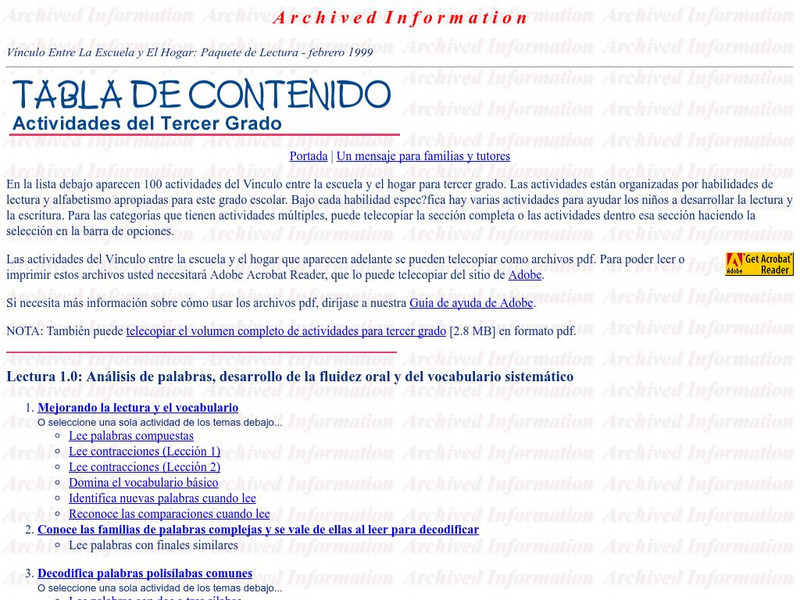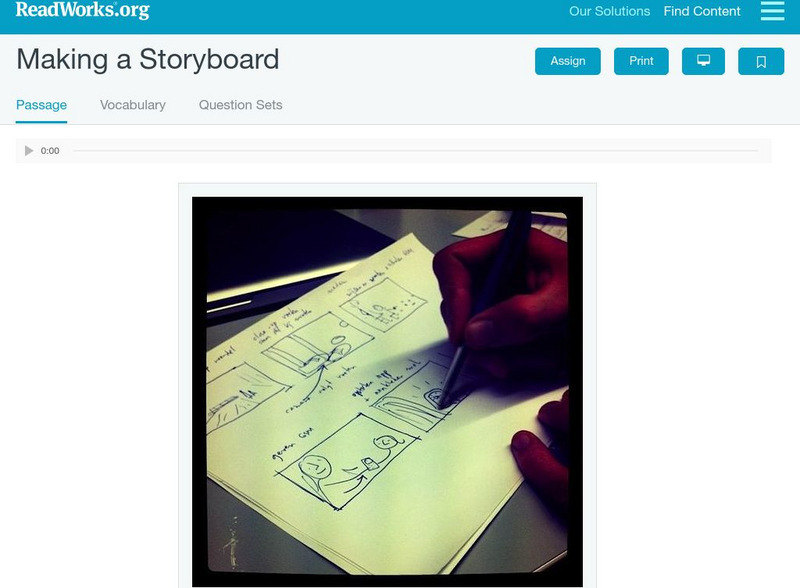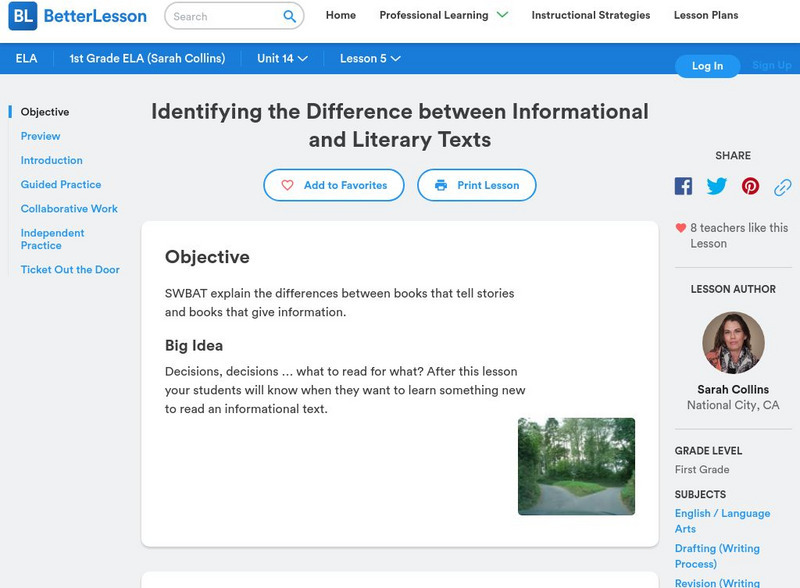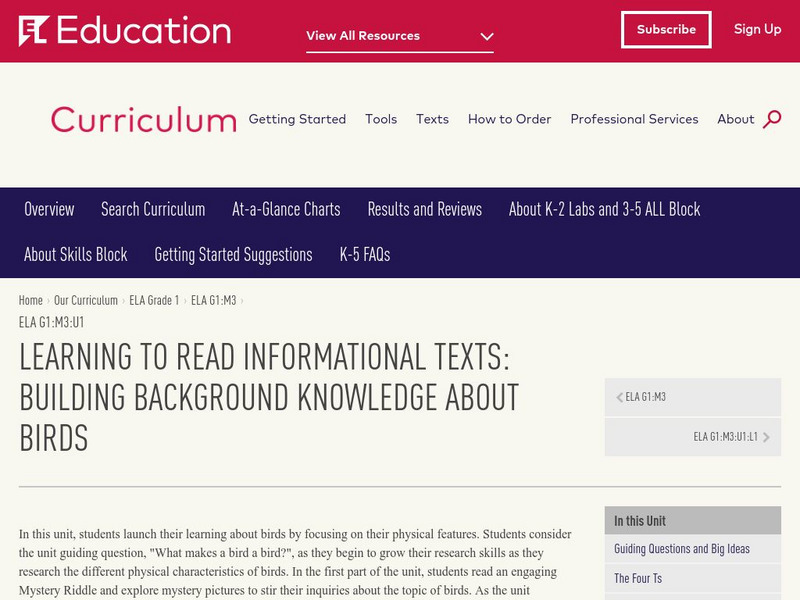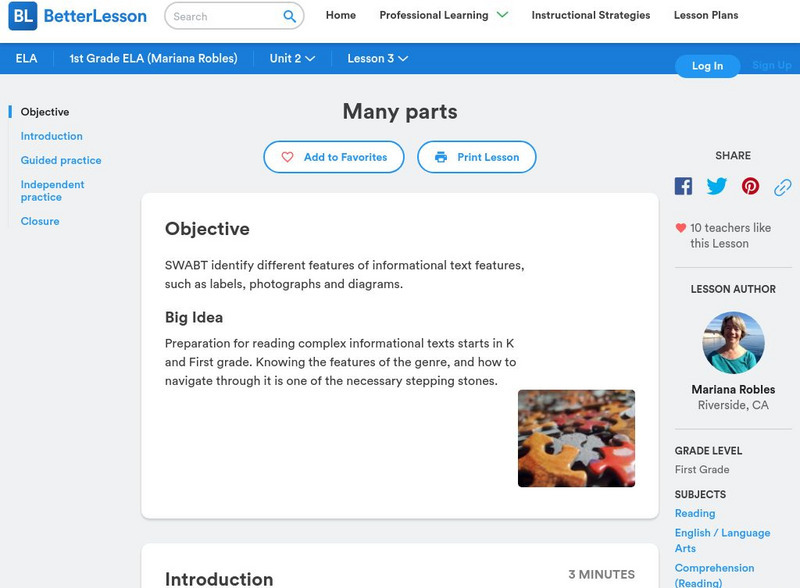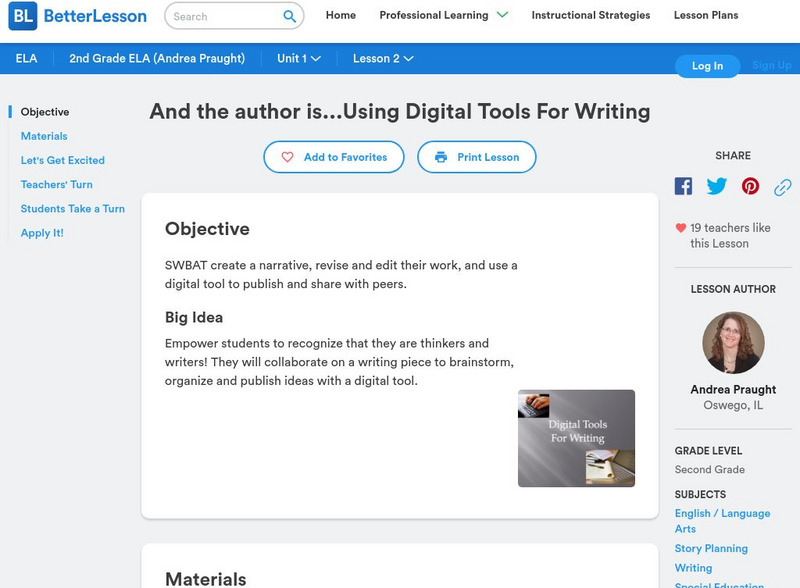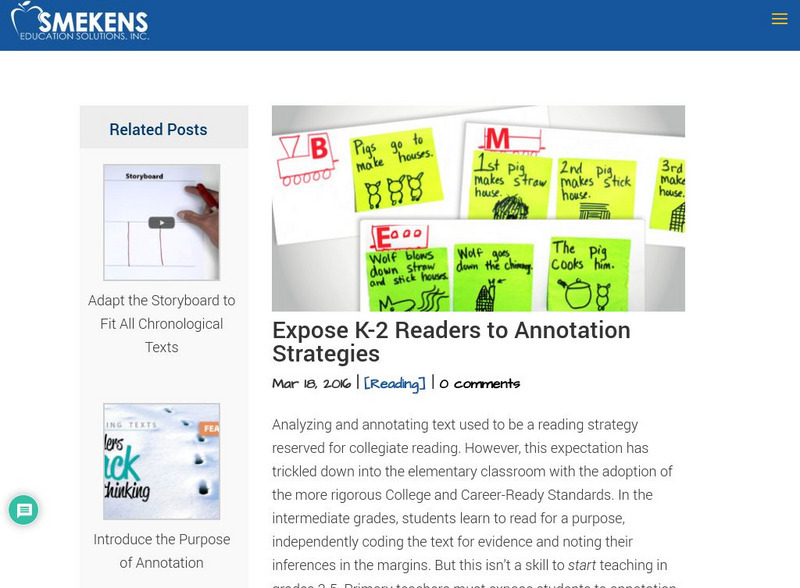Curated OER
Causes
What makes someone cry? Little learners read the story, Why Do You Cry?: Not a Sob Story by Kate Klise to discover a bit about crying and a bit about cause and effect. They'll fill out a cause and effect chart while they discuss and...
Curated OER
Personification
Second graders recognize personification in texts. In this personification lesson plan, 2nd graders discuss figurative language and how characters can be given human-like qualities. Students read a story and write down examples they...
Curated OER
Identifying Story Elements
Second graders explore story elements. In this language arts lesson, 2nd graders identifying characters, setting, and plot in familiar stories. Students listen to a story and complete a graphic organizer.
Curated OER
Changing Setting in a Story
Second graders explore how the setting in a story changes throughout. In this language arts instructional activity, 2nd graders read a story and identify the setting at various points within the story. Students describe the changes in...
Curated OER
Little Red Hen
Pupils listen to a teacher reading of The Little Red Hen, identify the story elements and sequence them. They talk about different jobs associated with providing food and act out a play based on the story. Be aware that although several...
McGraw Hill
Mc Graw Hill Education: Grade 2: Treasures: Practice Book O [Pdf]
Help second graders reinforce their understanding of the reading skills, vocabulary acquisition, phonemic awareness, and sight words with the pages in this 260-page workbook. This workbook is designed to supplement the stories from Grade...
US Department of Education
U.s. Dept. Of Education: Compact for Reading: First Grade Activities (Spanish)
Links to 100 first grade activities arranged by skill set and designed to improve reading and writing. All activities are in PDF format and are ready to print and use. They can be downloaded individually, according to skill set, or as...
US Department of Education
U.s. Dept. Of Education: Compact for Reading: Third Grade Activities (Spanish)
Links to 100 third grade activities arranged by skill set and designed to improve reading and writing. All activities are in PDF format and are ready to print and use. They can be downloaded individually, according to skill set, or as...
Read Works
Read Works: Passages: Making a Storyboard
[Free Registration/Login Required] Students read a nonfiction text about a girl whose aunt is a children's book author and answer questions about comprehension, sequencing, supporting details, main idea, vocabulary, and more. Links to a...
Other
Lexile: The Lexile Framework for Reading: Find a Book
Students use the "Find A Book" tool to build a custom book list based on their Lexile measure and interests. Book summaries and cover illustrations are included, as well as links to assist in locating the books on the list.
Read Works
Read Works: Lesson: Author's Purpose: Cause and Effect Signal Words
[Free Registration/Login Required] With this lesson plan, students can learn how several authors can write about the same topic, but for different purposes.
Better Lesson
Better Lesson: Identifying the Difference Between Informational and Literary Text
Students will learn the difference between books that tell stories and books that give information. Multiple videos of different level reading groups engaged in this lesson, along with a printable activity sheet are included.
EL Education
El Education: Learning to Read Informational Texts: Building Background
In this comprehensive unit, students launch their learning about birds by using informational texts. As students read these texts, they build background knowledge and develop their skills as readers of informational texts. Included are...
Better Lesson
Better Lesson: Where Did You Learn That?
As adults, we explore pictures, captions, diagrams and text, when reading any kind of informational piece. Kids can do this too! In this instructional activity, learners will sort information that was obtained from pictures and diagrams,...
Better Lesson
Better Lesson: Many Parts
Preparation for reading complex informational texts starts in K and First grade. Knowing the features of the genre, and how to navigate through it is one of the necessary stepping stones. This instructional activity introduces the...
CPALMS
Cpalms: What Do You Do With a Tail Like This?
[Free Registration/Login Required] In this instructional activity, students will use What Do You Do With A Tail Like This? by Steve Jenkins and Robin Page to identify the main topic and key details using the illustrations and text....
Read Works
Read Works: Lesson 1: Actions
In this resource, students will practice identifying and describing the actions of a character. Teachers will model these skills through the use of text and pictures from the story No, David! by David Shannon. Students will then draw a...
Better Lesson
Better Lesson: Text Feature Diagrams
At the end of this instructional activity, students will be able to identify and create diagrams associated with informational text. Included is a link to an eSpark video on diagrams, rules for group work, multiple examples of diagrams,...
Better Lesson
Better Lesson: Visual Representations in Informational Text
Students will look at examples of illustrations and diagrams in informational texts and discuss how each one helps enhance the text. Students gain the knowledge that sometimes a picture is worth a thousand words because a complex idea...
Better Lesson
Better Lesson: What Shapes the Land?
In this lesson plan, the teacher will read a book about different landforms. The children will learn about the features of the landforms and how they were shaped by natural forces. Then text features will be discussed. The children will...
Better Lesson
Better Lesson: And the Author Is...using Digital Tools for Writing
Empower students to recognize that they are thinkers and writers! They will collaborate on a writing piece to brainstorm, organize and publish ideas with a digital tool. This lesson highlights different website creations as examples of...
Other
Smekens Educational Solutions: Expose K 2 Readers to Annotation Strategies
This article discusses how to begin teaching students in K-2 to record their ideas about text using highlighters, colored pens, large graphic organizers, and sticky notes. Students can retell a story with a storyboard, use a web to find...
Other
Story Jumper
Students can create their own storybooks using this website. They can add backgrounds, props, characters, personal photos or artwork, text, and their own voices. Free registration is required in order to save their work. There is a cost...
Writing Fix
Writing Fix: If You Give a Student an Animal
For this lesson plan, the book If You Give a Moose a Muffin, written by Laura Numeroff, is used as a mentor text for word choice. The content focus of the lesson is to teach the students to take ownership of scientific and descriptive...




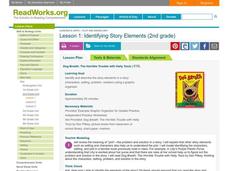

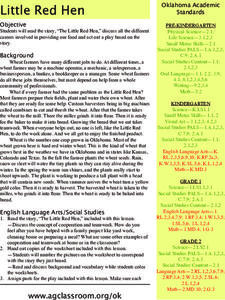
![Mc Graw Hill Education: Grade 2: Treasures: Practice Book O [Pdf] eBook Mc Graw Hill Education: Grade 2: Treasures: Practice Book O [Pdf] eBook](https://content.lessonplanet.com/knovation/original/18010-f370394f886702c6069b596e21a006e0.jpg?1661551625)

